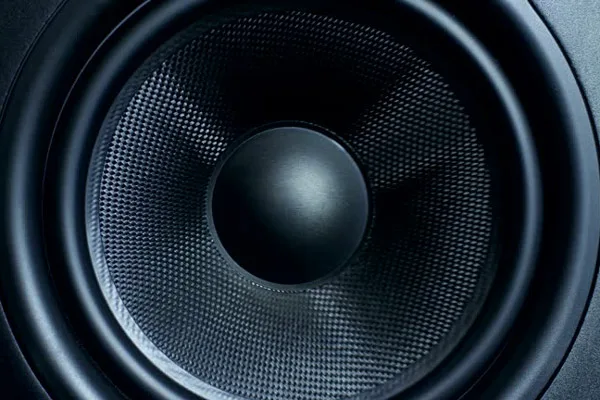In the world of high-fidelity audio, the pursuit of perfection is relentless. Audiophiles and engineers alike focus on the magnets, the voice coils, the cabinet design, and the speaker cones themselves. But there’s a silent, flexible hero in this symphony of components that is critical to achieving pristine sound: silicone rubber molding.
This advanced manufacturing process is not for the speaker’s external shell but for its heart—the precise, durable, and often complex parts that directly influence sound quality, consistency, and longevity. Let’s explore how this versatile technology is shaping the sounds we love.
The Critical Role of Flexibility and Sealing
At its core, a speaker is a device that converts electrical energy into mechanical movement (vibration), which then creates sound waves. This movement demands components that are both precise and resilient.
- The Spider (Suspension):This is the corrugated component that connects the voice coil to the speaker’s frame (basket). Its job is to keep the coil perfectly centered in the magnetic gap, allowing it to move freely yet linearly. A silicone-molded spider offers exceptional durability and consistent flexibility. Unlike some traditional materials, silicone is highly resistant to fatigue, meaning it won’t weaken or deform over time, even with millions of excursions. This results in a speaker that maintains its precise performance and tonal characteristics throughout its lifespan.
- The Surround:This is the flexible ring that attaches the outer edge of the speaker cone (diaphragm) to the basket. It acts as a pivot point for the cone’s movement. Silicone surrounds are prized for their neutrality. They do not add their own “color” or resonance to the sound, providing a clean, undistorted transmission of the cone’s movement. They are also immune to environmental factors like humidity and temperature swings that can degrade foam or cloth surrounds.
Precision and Consistency at Scale
For an audio brand, producing a single perfect-sounding prototype is one thing; manufacturing 100,000 speakers that all sound identical is another. This is where silicone rubber molding shines.
- High Repeatability:Injection molding of liquid silicone rubber (LSR) is an automated, high-precision process. Once the mold is perfected, every single part that comes out of it is a perfect clone of the last. This eliminates the unit-to-unit variations that can plague speakers made with less consistent manual processes.
- Complex Geometries:Silicone molding allows engineers to design parts with intricate features that would be impossible or prohibitively expensive with other methods. This includes integrating sealing lips, specific damping patterns, or even over-molding silicone directly onto other components for a perfect seal.

Audio speakers
Enhancing Performance with Advanced Features
The benefits of silicone go beyond simple flexibility and consistency. It enables advanced features that push the boundaries of speaker performance.
- Heat Dissipation:Modern high-power speakers generate significant heat at the voice coil. Special thermally conductive silicone formulations can be used to create components that help draw this heat away from the coil, preventing thermal failure and power compression (the loss of efficiency as the speaker heats up).
- Damping and Compliance:The exact hardness (durometer) and elasticity of silicone can be precisely formulated by chemists. This allows engineers to “tune” the compliance of the spider and surround to achieve the desired low-frequency response and transient response, directly influencing the speaker’s “tight” and “punchy” bass or smooth midrange.
- Dust Caps and Seals:Silicone is an excellent material for dust caps that protect the delicate gap between the voice coil and magnet. It can also be molded into perfect gaskets and seals for the speaker frame, ensuring an airtight fit into the enclosure, which is crucial for the performance of sealed or ported subwoofer designs.
From Consumer to Pro: Applications Across the Spectrum
The use of silicone rubber molding is not limited to one segment of the audio market.
- High-End Home Audio:Here, the focus is on absolute sound quality. The neutrality, durability, and precision of silicone components are a perfect match for flagship bookshelf and floor-standing speakers.
- Professional Studio Monitors:For speakers used in recording and mixing, accuracy is non-negotiable. Engineers rely on the consistency and lack of coloration provided by silicone surrounds and spiders to make critical mixing decisions.
- Automotive Audio:The harsh environment of a car—with extreme temperatures, vibration, and humidity—demands rugged components. Silicone’s environmental resistance makes it the ideal choice for high-performance car audio speakers.
- Portable & Bluetooth Speakers:These products need to be durable and often weather-resistant. Silicone seals and surrounds provide the robustness and, in many cases, the IP-rated waterproofing that consumers demand.
Conclusion
While the gleaming cone and powerful magnet might be the stars of the show, the performance of a modern audio speaker is deeply reliant on the unsung heroes made from silicone rubber. Through precision molding, silicone provides the critical combination of flexibility, consistency, durability, and acoustic neutrality that allows engineers to translate electrical signals into the rich, dynamic, and faithful sound we experience. It is, without a doubt, a key ingredient in the recipe for audio perfection.
